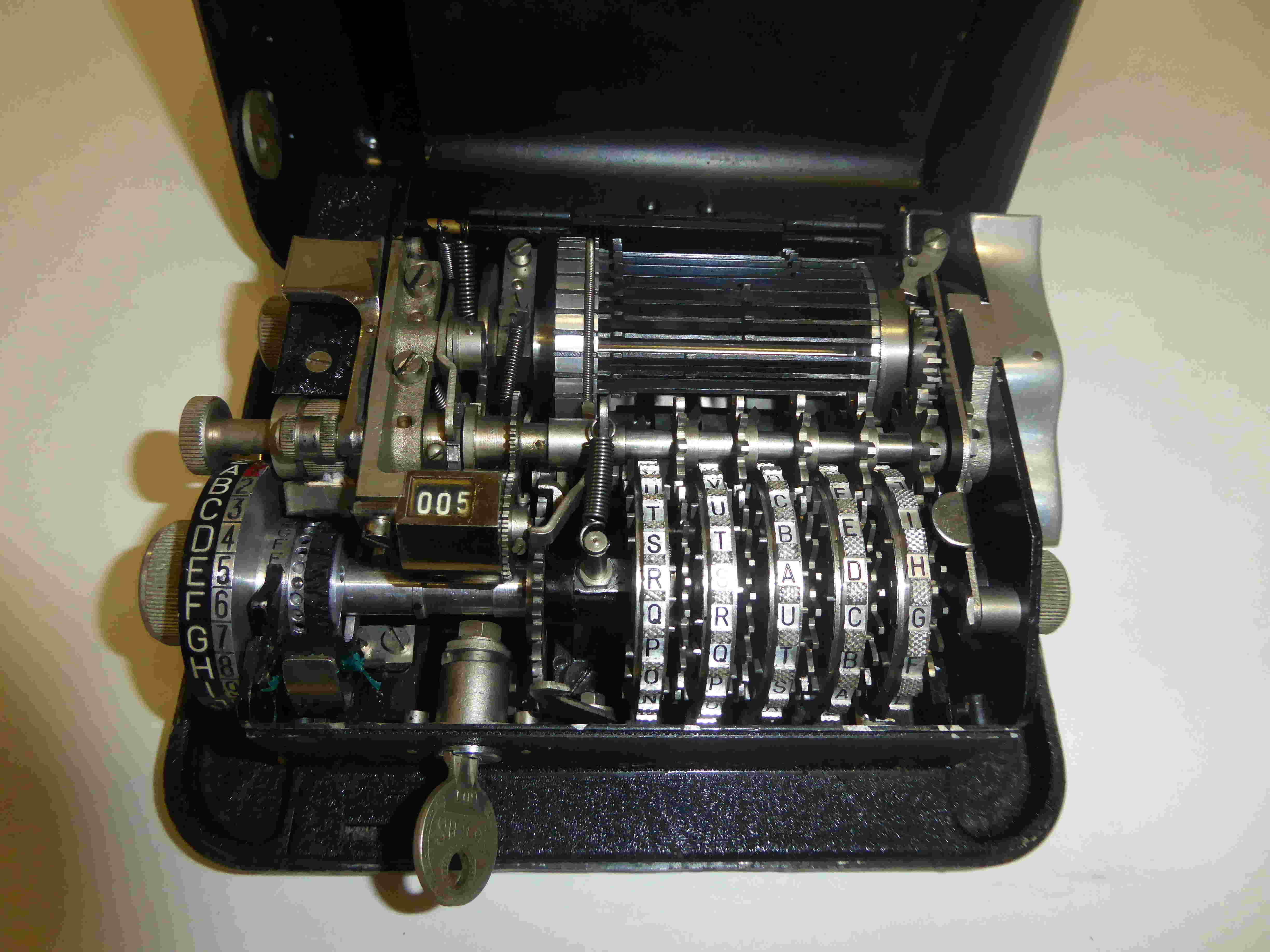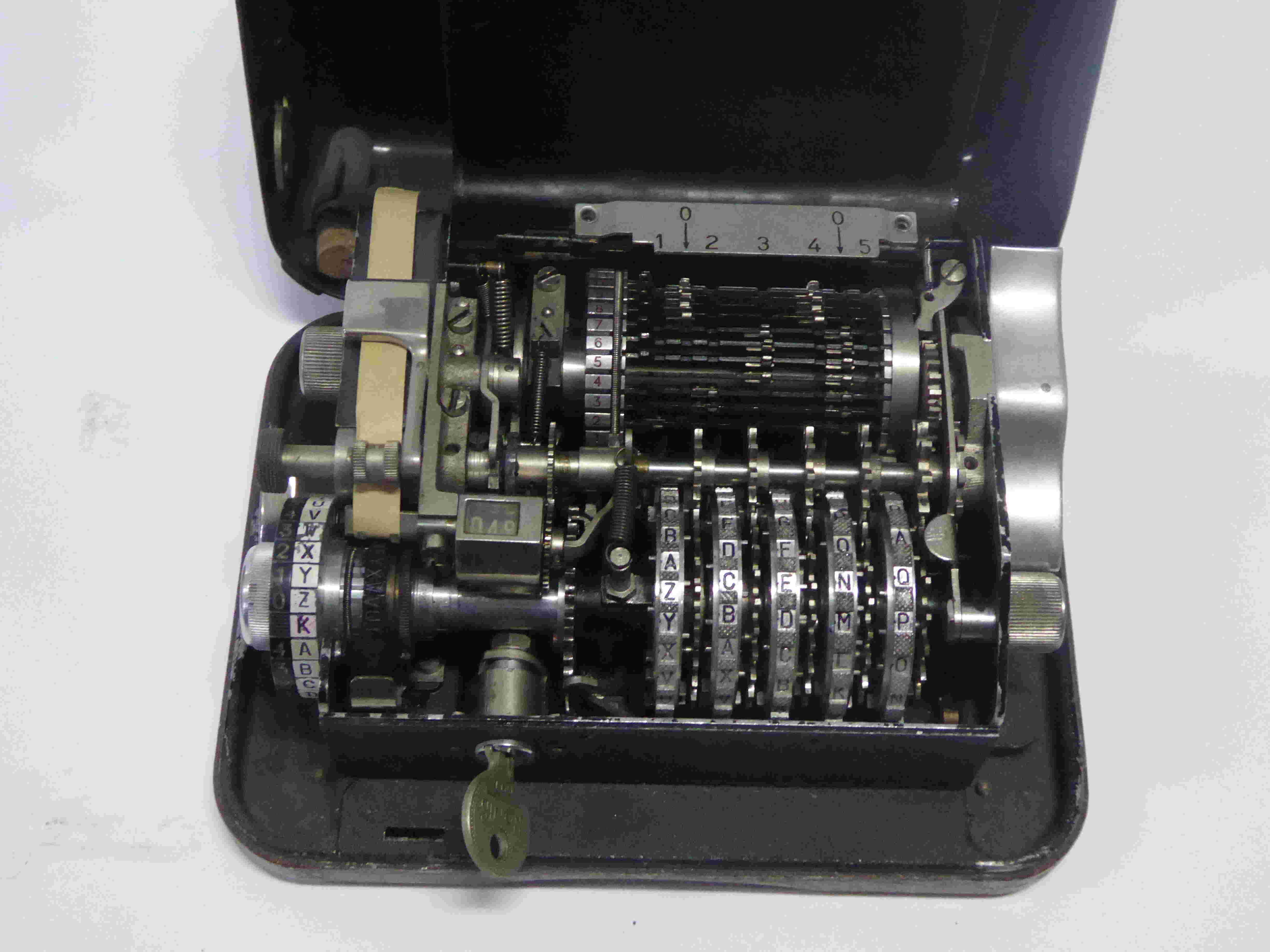French Army C-36: The post-war period
( )
(
)
( )
)
C-36 Home Page
7.1 The historical context – The Indochina War and Algerian War
In the aftermath of World War II, France faced the problem of decolonization; first with the Indochina War (1945-1954) and then with the Algerian War (1954-1962). In both cases, these wars ended with the independence of the nations that had been under the French yoke.
7.2 French encryption – The C-36: a museum piece and its withdrawal
7.2.1 Indochina
During the Second World War, Indochina was invaded by the Japanese. Consequently, when the French state returned in 1945, there was no longer any means of encryption on site. The documents that I have consulted cite the use of several cipher systems: the B-211, Typex, but especially the M-209 and SLIDEX [1]. Many messages ask the mainland for progressively more endowments of M-209s. No document cites the C-36. It seems totally absent from operations.
Here is an example of a document that suggests the exclusive use of the M-209 for small units (SHD-10H1867 1954):
May 1954 - Secretary of State for War to Mr. General Cdt in Chief of the Land, Naval and Air Forces in Indochina - object: management of small ciphers machines ... The small cipher machines currently in service in Indochina (Converter M-209) will be taken into account by Signal Corps.
Footnote:
[1] The Typex and SLIDEX systems are English cipher systems dating from WWII.
The Typex is a cipher machine using rotors like the Enigma. The SLIDEX system
is a camouflage system. It substitutes an element of the clear text (words,
letters, numbers … ) in a bigram of two letters corresponding to the coordinates
of the element on a sheet of paper.
7.2.2 Algeria
Similarly, I inspected many military documents from the period of the Algerian War. None mention the C-36. Conversely, the M-209 is cited on numerous occasions. Here is an example (SHD-1H3623 1960):
6/17/59 - Inspection report of an encryption workshop (in Oued Athmenia). To the question "At what time are the machines locked?", Answer: no M-209.
 |
 |
|
|
|
7.2.3 Mainland and the C-36 M2
The mainland had C-36s, but they were no doubt used only for training or as back-ups.
From 1950, a new model of the C-36 appears, Model 2 or in short, C-36 M2 (Proc 2008, Fabreguettes 2002). The fixed lugs are replaced by lugs that can be moved as on the M-209. The typewheel is no longer frozen. It is possible to configure it with a disordered alphabet. The Figure 1 shows an ordinary C-36 (M1) and Figure 2 shows a C-36 M2. Although these improvements appear to significantly improve its security, the C-36 M2 still does not appear in theaters of operations (Indochina and Algeria).
From 1960, the small machines (C-36 and M-209) disappeared and were replaced by the CX-52 and CD-57. One can observe the continued confidence of the French Army in Mr. Hagelin’s cipher machines. Finally, after their withdrawal, the C-36 and M-209 were mostly destroyed. The number of C-36s that currently exist must be low.
Note: the CD-57 machine can emulate the C-36. On the other hand, the French CX-52 can emulate not only the C-36 but also the M-209 and the C-36 M2. Surely this helped the transition (see below).
7.3 Variants of the basic key
A document from ARCSI (Fabreguettes 2002) describes the use of the C-36 after the war. It mentions the change from time to time of the bars that incorporate lugs within an encryption network. These changes were rarely made because the machine had to be disassembled, which could only be done in a repair shop. The number of possible configurations is extremely low. There are actually only the following six configurations.
1: 2: 3: 6: 13, 1: 2: 3: 7: 12, 1: 2: 4: 5: 13, 1: 2: 4: 6: 12, 1: 2: 4: 7: 11, 1: 2: 4: 8: 10Indeed, these configurations are the only ones that make it possible to obtain all the possible offsets from 0 to 25 and because they are ordered, they also make it possible to reuse the existing bars. However, if we want to reuse the first two bars, which each have two lugs, we must remove the second lug. Returning to Mt Valérien, I observed the C-36 again (Configuration B) and I observed traces of files at the location of the second lug of the first two bars. My hypothesis was confirmed.
7.4 Cryptanalysis
Just after the war, Italian General Luigi Sacco published a new edition of his cryptography manual (Sacco 1947). He describes several cipher machines including Enigma and Hagelin C-36 and C-38 machines. He considers that these machines offer good security. The only attack he imagines against these machines is the use of in-depth messages. Accordingly, he advises changing the keys more frequently as the traffic increases.
With regard to the C-36, the Sacco's book gives an example of decryption from three messages encrypted with the same key. A few decades after the war, several articles and books tackled the breaking of the M-209 and rediscovered the German methods. Most of the methods described can be applied to the C-36. We will only cite two works.
- First, Deavours and Kruh's book on cipher machines (Deavours & Kruh 1985) gives an example of reconstructing the configuration of the pins of a C-35 from a crib.
- Similarly, the main lines of the statistical breaking of the Hagelin C- series machines are described. A message of 800 characters encrypted by the C-35 is given as a challenge. Then Baker's book on the cryptanalysis of the M-209 (Barker 1977) describes in detail the statistical method that is only touched on in the previously mentioned work.
In Chapter 5.4, I described my method of finding the internal key using the hill climbing method. This method, as already mentioned, is quite simple. George Lasry wrote several more complex algorithms for decrypting M-209 messages that can be applied to the C-36 (Lasry 2017).
References
- Barker Wayne G., 1977. Cryptanalysis of the Hagelin cryptograph, Aegean Park Press
- Deavours, Cipher A., Kruh, Louis. 1985. Machine Cryptography and Modern Cryptanalysis – Cipher A. Deavours & Louis Kruh, Artech House, Inc, Boston, London.
- Deavours, Cipher A. 1990. SOLUTION OF C-35 TEXTS WITH PARTIAL KEY OVERLAPS, Cryptologia, 14:2, 162-168, DOI: 10.1080/0161-119091864869
- Fabreguettes, J-P, 2002. Étude de la machine à chiffrer C36, Bulletin de l’ARCSI, N°30.
- Sacco, L., 1947. Manuale di crittografia, 3e edition. Rome: Instituto Poligrafico dello Stato.
- SHD – 10 H 1867. 1954. Guerre d'Indochine – Organisation du chiffre – 1950-1954
- SHD – 1 H 3623. 1960. Guerre d'Algérie – ZNC et 14 DI - 1859-1960